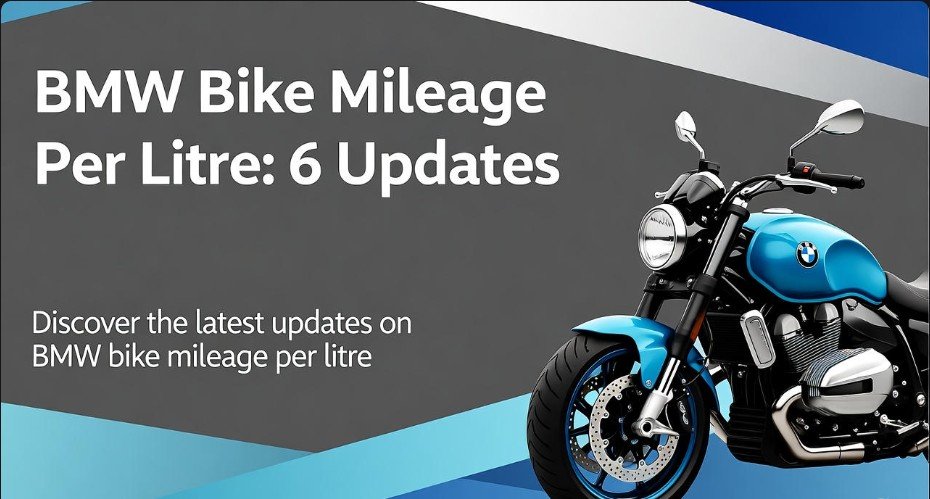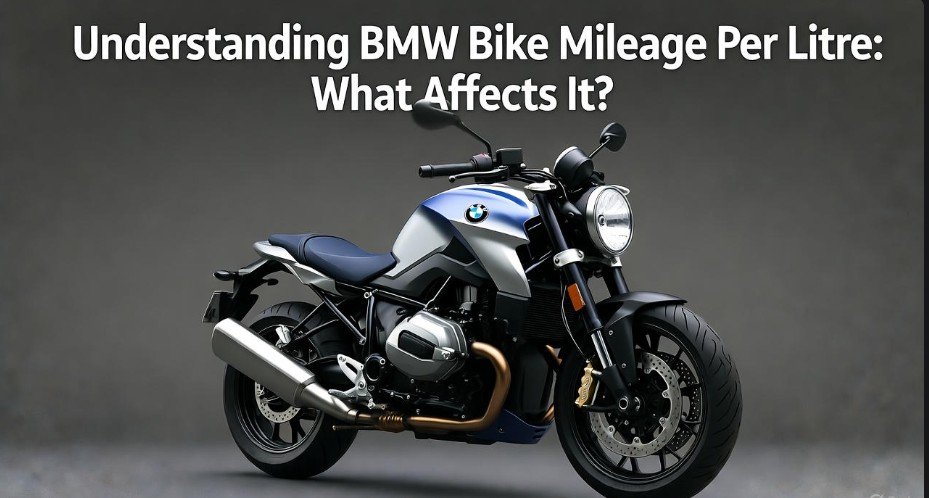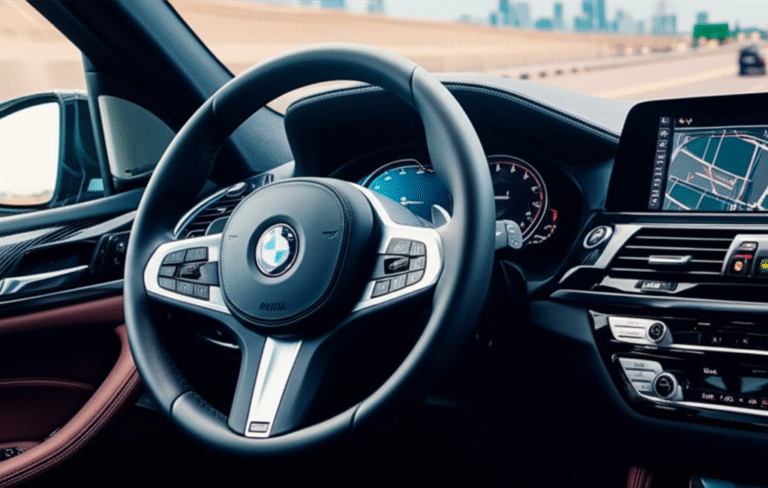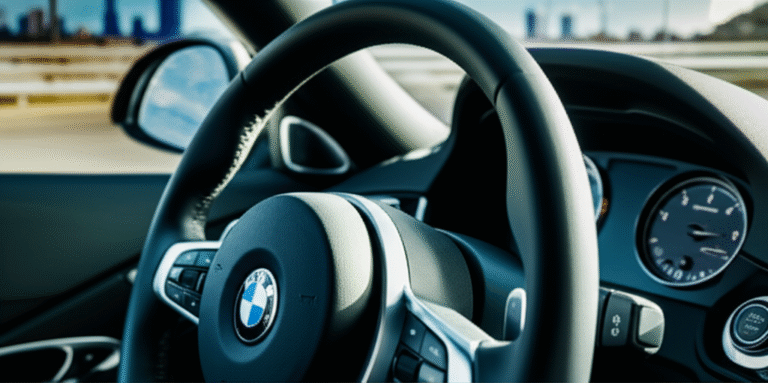BMW Bike Mileage Per Litre: 6 Updates

BMW Bike Mileage Per Litre: 6 Bold Updates You Must Know
Key Takeaways
- Understand BMW bike mileage variations.
- Learn to maximize your BMW motorcycle’s MPG.
- Discover how rider habits impact fuel economy.
- Explore the latest BMW motorcycle MPG updates.
- Get tips for better fuel efficiency on your BMW.
- Find out what affects your BMW bike’s fuel consumption.
When you’re cruising down the open roads of the USA, whether it’s the scenic Pacific Coast Highway or the bustling streets of New York, your BMW motorcycle is a symbol of performance and luxury. But a question that often comes up, especially with the ever-changing fuel prices, is: “What’s the BMW bike mileage per litre?” It’s a common concern for riders, new and seasoned alike. Deciphering the exact mileage can feel a bit complex, as it depends on many factors. This guide will break down everything you need to know about your BMW motorcycle’s fuel efficiency, including some exciting new updates. From understanding how your riding style affects your MPG to exploring the latest innovations from BMW Motorrad, we’ve got you covered. Let’s rev up and get informed!
Understanding BMW Bike Mileage Per Litre: What Affects It?

The mileage of your BMW motorcycle, often expressed as miles per gallon (MPG) in the US market but easily convertible to kilometers per litre, isn’t a single, fixed number. It’s a dynamic figure influenced by a combination of the motorcycle itself and how you ride it. For BMW Motorrad, known for its engineering prowess and rider-focused design, achieving optimal fuel efficiency is a continuous goal. However, several key elements play a significant role in the actual mileage you experience.
Engine Size and Type
The heart of any motorcycle is its engine, and for BMW bikes, this means a range of powerful and sophisticated engines. Larger displacement engines, typically found in touring or sport-touring models like the R 1250 RT, naturally consume more fuel than smaller, more nimble engines in models like the G 310 R.
- Inline-four, boxer-twin, or parallel-twin: Each engine configuration has inherent efficiency characteristics. BMW’s iconic boxer-twin engines, for instance, are renowned for their smooth power delivery and, in many cases, surprisingly good fuel economy for their size, especially in newer iterations.
- Horsepower and Torque: Higher horsepower and torque figures often correlate with greater fuel consumption, particularly when you’re utilizing that power frequently.
Riding Style and Conditions
This is arguably the most significant variable affecting your BMW bike’s mileage. How you twist that throttle makes a world of difference.
- Aggressive Acceleration and Braking: Frequent hard acceleration and sudden braking are fuel-guzzlers. Smooth, progressive throttle inputs and anticipating stops will save you a considerable amount of fuel. Imagine a sports car; you wouldn’t redline it constantly and expect great MPG, and it’s the same principle for motorcycles.
- Speed: Higher speeds dramatically increase aerodynamic drag. Most motorcycles, including BMWs, reach their peak fuel efficiency at moderate cruising speeds, often between 50-60 mph. Exceeding 70-75 mph will lead to a noticeable drop in mileage.
- Terrain: Riding uphill requires more power, thus more fuel. Frequent gear changes on undulating roads also impact efficiency.
- Traffic: Stop-and-go city traffic is the enemy of good mileage. Constant idling and acceleration cycles are highly inefficient.
Maintenance and Tire Pressure
A well-maintained motorcycle is an efficient motorcycle. Neglecting simple maintenance can cost you at the pump.
- Regular Servicing: Timely oil changes, air filter replacements, and spark plug checks ensure your engine runs at its optimal performance, which includes fuel efficiency. Following BMW’s recommended service schedule is crucial.
- Tire Pressure: Underinflated tires increase rolling resistance, forcing the engine to work harder. Always maintain the recommended tire pressure as specified in your owner’s manual. You can usually find this information on a sticker on the swingarm or inside the chain guard.
Aerodynamics and Load
The shape of the motorcycle and what you carry can also influence fuel consumption.
- Wind Resistance: Touring motorcycles with large fairings are designed to reduce wind resistance at speed, which can aid fuel efficiency on highways. However, accessories like large windshields and luggage can alter the airflow.
- Weight: The heavier the bike and rider combination, and the more luggage you carry, the more fuel is required to move that mass.
BMW Bike Mileage Per Litre: Key Model Insights
BMW Motorrad offers a diverse range of motorcycles, each with its own expected mileage characteristics. While exact figures can vary, here’s a general overview for some popular series. Remember, these are estimates, and your actual mileage may differ based on the factors discussed above.
The Boxer Twins: R Series (R 1250 GS, R 1250 RT)
BMW’s legendary R series, particularly the R 1250 models with their ShiftCam technology, strikes a remarkable balance between power and efficiency for their class.
- R 1250 GS Adventure: For an adventure bike of its size and capability, the R 1250 GS is surprisingly economical on the open road, often achieving around 45-55 MPG. This translates to approximately 20-23.4 km/l. Its versatility means it can handle highway cruising efficiently.
- R 1250 RT: The touring-focused R 1250 RT, with its aerodynamic fairing, can also achieve impressive figures, often in the 48-58 MPG range (approximately 20.4-24.7 km/l) when ridden at steady highway speeds.
The Inline-Four and Parallel-Twin Powerhouses: S 1000 Series and F Series
These series represent different ends of the performance spectrum but are engineered for efficiency within their respective categories.
- S 1000 RR / S 1000 R: BMW’s superbikes are designed for performance, but modern iterations incorporate technologies to improve efficiency when not pushed to their limits. Expect mileage in the 35-45 MPG range (approximately 15-19.1 km/l) during spirited riding, potentially higher if ridden more gently.
- F Series (e.g., F 900 XR, F 900 R): These parallel-twin models are often lauded for their excellent balance of performance and fuel economy. They can frequently deliver around 55-65 MPG, equating to 23.4-27.6 km/l, making them very practical for daily commuting and longer trips.
The Compact and Nimble: G Series (G 310 R, G 310 GS)
The entry-level G 310 models are designed for accessibility and economy.
- G 310 R / G 310 GS: These lightweight, single-cylinder motorcycles are exceptionally fuel-efficient. Riders commonly report mileage in the 60-75 MPG range, which is approximately 25.5-31.9 km/l. They are perfect for urban environments and fuel-conscious riders.
The Heritage and Sport Heritage: R nineT Series
While focused on classic style and rider engagement, the R nineT models still offer respectable economy.
- R nineT Models: The boxer-twin engine in the R nineT offers a delightful riding experience. Mileage typically falls in the 40-50 MPG range (approximately 17-21.3 km/l), which is quite good for a bike emphasizing character and performance.
BMW Bike Mileage Per Litre: 6 Bold Updates You Must Know
BMW Motorrad is constantly innovating, focusing on technology that enhances both rider experience and efficiency. Here are six key updates and areas of focus that impact BMW bike mileage per litre.
1. Enhanced Engine Management Systems
Modern BMW motorcycles feature highly sophisticated engine control units (ECUs) that precisely manage fuel injection and ignition timing.
- Adaptive Tuning: These systems can adapt to changing conditions, such as altitude or temperature, to maintain optimal combustion and fuel efficiency.
- Rider Modes: Many BMW models offer distinct rider modes (e.g., Rain, Road, Dynamic, Enduro). Selecting ‘Rain’ or ‘Road’ modes often softens throttle response and limits peak power, leading to improved fuel economy in everyday riding scenarios. Visit the official BMW Motorrad Manuals page to check specific model features.
2. Advanced Valve Control (ShiftCam Technology)
Introduced on models like the R 1250 series, BMW’s ShiftCam technology is a game-changer for boxer-twin engines.
- Variable Valve Timing: This system adjusts valve timing and lift depending on engine load and speed. At lower RPMs, it provides a more efficient intake cam profile, improving low-end torque and fuel economy. At higher RPMs, a different cam profile engages for maximum power.
- Real-World Impact: This means you get both excellent fuel efficiency during relaxed cruising and potent power when you need it, all from the same engine.
3. Lightweight Construction and Materials
BMW Motorrad consistently explores the use of lightweight materials to improve overall performance, including fuel efficiency.
- Aluminum and Composites: Using aluminum for frames, swingarms, and engine components, along with advanced composite materials, reduces the motorcycle’s overall weight. A lighter bike requires less energy to accelerate and maintain speed, directly benefiting MPG.
- Integrated Design: Efficient design often means fewer parts and a more compact structure, further contributing to weight savings.
4. Optimized Aerodynamics
From sporty fairings to touring windscreens, BMW invests heavily in aerodynamic design.
- Computational Fluid Dynamics (CFD): BMW engineers use advanced software to simulate airflow around the motorcycle, identifying areas to reduce drag.
- Ergonomics Integration: Aerodynamic design isn’t just about reducing drag; it also aims to improve rider comfort by deflecting wind and noise away from the rider’s helmet and torso. This can make longer journeys less tiring and potentially more fuel-efficient due to a more stable riding position.
5. Eco-Friendly Drivetrain Innovations
While fully electric motorcycles are still emerging for BMW Motorrad, the company is committed to reducing emissions and improving efficiency across its range.
- Euro 5 Compliance: Newer BMW models are designed to meet stringent emissions standards like Euro 5, which often go hand-in-hand with improved fuel combustion and efficiency.
- Electric Models on the Horizon: BMW has showcased electric concepts and introduced electric scooters like the CE 04, signaling a future where electric powertrains will play a significant role, offering zero tailpipe emissions and potentially lower running costs. Keep an eye on announcements from BMW Motorrad regarding their electrification strategy.
6. Integrated Connectivity and Data Feedback
Modern BMW bikes offer advanced connectivity features that can indirectly help riders manage their fuel consumption.
- BMW Motorrad Connected App: This app allows riders to plan routes, track their rides, and view ride statistics. By analyzing past ride data, you can identify patterns where you might have consumed more fuel unnecessarily.
- On-Board Computer: Many models feature sophisticated on-board computers that display real-time fuel consumption, average MPG, and remaining range, empowering riders to make more fuel-conscious decisions on the go.
Table: Estimated BMW Bike Mileage (MPG & km/litre) by Model Series
This table provides a general estimation. Actual mileage will vary based on riding conditions and style.
| BMW Motorrad Series | Example Model | Estimated MPG (US) | Estimated km/litre | Primary Use Case |
| :—————— | :———— | :—————– | :—————– | :————— |
| G Series | G 310 R | 60 – 75 | 25.5 – 31.9 | Urban / Commuter |
| F Series | F 900 XR | 55 – 65 | 23.4 – 27.6 | Sport Touring |
| R nineT Series | R nineT | 40 – 50 | 17.0 – 21.3 | Heritage / Roadster |
| R Series | R 1250 GS | 45 – 55 | 20.0 – 23.4 | Adventure Touring |
| R Series | R 1250 RT | 48 – 58 | 20.4 – 24.7 | Grand Touring |
| S 1000 Series | S 1000 RR | 35 – 45 | 15.0 – 19.1 | Sportbike |
Maximizing Your BMW Bike’s Fuel Efficiency: Practical Tips
Achieving the best possible mileage from your BMW motorcycle is within your control. By adopting a few smart habits, you can significantly improve your MPG and enjoy more miles between fill-ups.
Smooth Riding Techniques
This is the golden rule of fuel efficiency.
- Gentle Throttle Inputs: Roll on the throttle smoothly rather than snapping it open. Think of it as coaxing the power out, not demanding it.
- Anticipate Stops: Look ahead and anticipate traffic lights and slowdowns. Rolling off the throttle early allows the engine to decelerate the bike naturally, saving fuel that would have been used for acceleration.
- Optimal Gear Selection: Don’t lug the engine in too high a gear, but also avoid revving the engine unnecessarily high. Shift up as soon as it feels comfortable, usually around 3,000-4,000 RPM for most cruising scenarios, depending on the model.
Maintain Optimal Tire Pressure
Underinflated tires are like riding with the brakes slightly on.
- Check Regularly: Check your tire pressure at least once a week, and before any long ride. Use a reliable tire pressure gauge.
- Follow Manufacturer Recommendations: Always inflate your tires to the pressure recommended by BMW Motorrad for your specific model. This information is typically found on a sticker on the motorcycle’s swingarm or in the owner’s manual.
Regular Maintenance is Key
A well-tuned engine runs efficiently.
- Air Filter: A clogged air filter restricts airflow, forcing the engine to work harder and consume more fuel. Clean or replace it according to your service schedule.
- Spark Plugs: Worn spark plugs can lead to incomplete combustion. Replace them at the recommended intervals.
- Oil Changes: Using the correct grade of engine oil and changing it regularly reduces friction within the engine, improving efficiency.
Reduce Unnecessary Weight
The less mass you have to move, the less fuel you’ll burn.
- Remove Luggage: If you’re not going on a long trip, remove bulky luggage racks, cases, or other accessories that add weight and aerodynamic drag.
- Pack Smart: When you do need to carry items, pack only what you need to keep the overall weight down.
Manage Your Speed Wisely
Higher speeds mean exponentially higher fuel consumption.
- Cruise Control: For models equipped with cruise control, use it on highways. It helps maintain a steady speed, which is more fuel-efficient than constant manual throttle adjustments.
- Appreciate Moderate Speeds: Understand that the sweet spot for fuel economy is typically between 50-60 mph. While you might be tempted to push it on open stretches, resisting the urge will pay off at the pump.
Mindful Use of Accessories
Even small things can impact fuel consumption.
- Heated Grips/Seats: These draw power from the alternator, which is driven by the engine. While a minor impact, turning them off when not needed can contribute to overall efficiency.
- Aftermarket Add-ons: Large windshields, aftermarket exhausts that alter backpressure, or other modifications can sometimes negatively affect fuel efficiency.
Pro Tip:
Plan your routes to avoid peak traffic hours and frequent stops. Utilizing navigation apps with traffic data can help you find the most efficient paths, saving both time and fuel.
BMW Bike Mileage Per Litre: FAQs
Here are some common questions riders have about their BMW motorcycle’s fuel economy.
Q1: How much fuel does a BMW G 310 R typically get per litre?
The BMW G 310 R is known for its exceptional fuel efficiency. You can typically expect around 25.5 to 31.9 kilometers per litre (km/l), which is roughly 60 to 75 miles per gallon (MPG) in US terms. This makes it a very economical choice for city riding and daily commutes.
Q2: What is the average mileage for a BMW R 1250 GS?
For a large adventure motorcycle like the BMW R 1250 GS, the mileage is quite impressive. On average, you can expect about 20 to 23.4 km/l (45-55 MPG). This figure is achieved through its advanced ShiftCam engine technology and generally relaxed riding on varied terrains.
Q3: Does riding in adverse weather conditions like rain affect my BMW bike’s mileage?
Yes, riding in adverse conditions like heavy rain or strong headwinds can affect your BMW bike’s mileage. You’ll likely use more fuel because you may need to accelerate more frequently to maintain momentum against increased resistance, or you might use a ‘Rain’ riding mode which softens throttle response for better control.
Q4: How can I improve the fuel economy of my older BMW motorcycle model?
For older BMW models without the latest electronic aids, focus on the fundamentals: ensure your engine is perfectly tuned (clean carburetors or fuel injection, good spark plugs, clean air filter), maintain correct tire pressure, ride smoothly with gentle throttle inputs, and avoid high speeds. Regular servicing is paramount.
Q5: Is it normal for my BMW bike’s mileage to fluctuate significantly?
Yes, it is normal for your BMW bike’s mileage to fluctuate. Factors like the type of riding (city vs. highway), speed, rider technique, carrying a passenger or luggage, tire pressure, and even fuel quality can all contribute to variations in fuel consumption.
Q6: Are there any specific riding modes on my BMW that are best for fuel economy?
Many modern BMW motorcycles come with selectable rider modes. Modes like ‘Rain’ or ‘Eco’ (if available) are specifically designed to optimize fuel efficiency by reducing throttle response, limiting peak power, and sometimes adjusting other engine parameters for a more economical ride.
Q7: What is the role of aerodynamic design in BMW bike mileage?
Aerodynamic design plays a crucial role, especially at higher speeds. BMW invests in designing fairings, windscreens, and the overall shape of their motorcycles to minimize air resistance (drag). Reduced drag means the engine doesn’t have to work as hard to push the motorcycle through the air, leading to better fuel economy on highways.
Conclusion
Understanding your BMW bike’s mileage per litre is key to enjoying your riding experience, whether you’re navigating the vast landscapes of the USA or making your daily commute. We’ve explored the intricate factors influencing fuel efficiency, from engine specifics and rider habits to BMW’s cutting-edge technological advancements like ShiftCam and optimized aerodynamics. By implementing the practical tips discussed – focusing on smooth riding, diligent maintenance, and mindful speed – you can genuinely enhance your motorcycle’s MPG. BMW Motorrad’s commitment to innovation ensures that future models will continue to offer impressive performance alongside improved efficiency. So, keep these insights in mind, stay informed about your bike’s performance, and enjoy every mile of your journey with confidence and efficiency. Happy riding!


